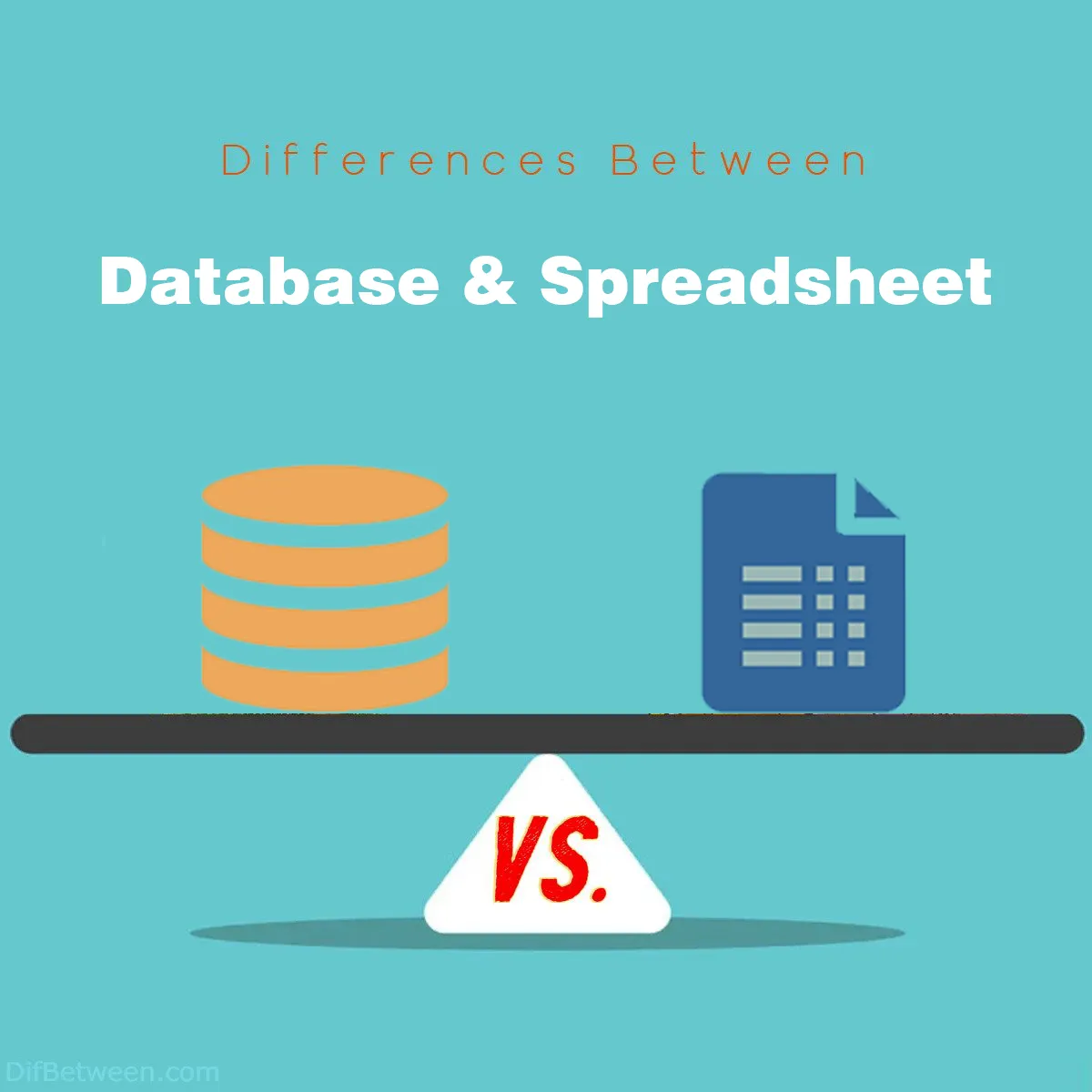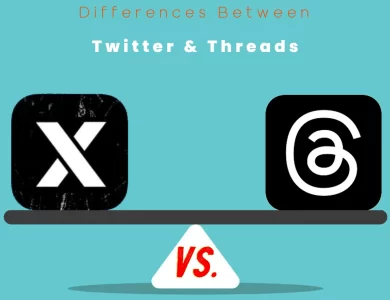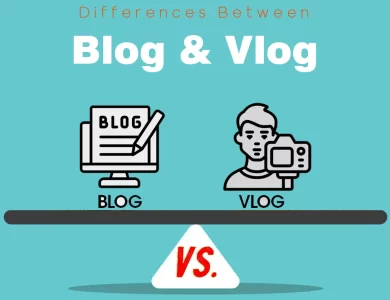
| Aspect | Database | Spreadsheet |
|---|---|---|
| Data Structure and Organization | Structured tables with predefined schemas | Cells in rows and columns, flexible format |
| Data Scalability | Highly scalable, suitable for large datasets | Limited scalability, better for smaller datasets |
| Data Collaboration | Supports multi-user collaboration with access control | Limited collaboration features, may require manual coordination |
| Data Security | Advanced security features, encryption, user authentication | Basic security measures, may lack robust encryption |
| Data Integrity and Validation | Enforces data validation rules, referential integrity | Flexible data entry, weaker data validation |
| Query and Reporting Capabilities | Powerful query languages for complex analysis | Basic reporting features, less efficient for complex analysis |
| Backup and Version Control | Built-in backup and version control features | Limited backup and version control, may require manual handling |
In the world of data management, two popular tools stand out: databases and spreadsheets. These two have been the trusted companions of professionals and enthusiasts alike when it comes to organizing, storing, and manipulating data. However, they serve distinct purposes and have unique features. Let’s dive into the key differences between databases and spreadsheets to help you choose the right tool for your needs.
Differences Between Database and Spreadsheet
The primary distinctions between a database and a spreadsheet lie in their data handling capabilities and organization. Databases are structured systems, employing tables and predefined schemas, making them ideal for large, complex datasets. In contrast, spreadsheets offer a more flexible but less structured approach, better suited for smaller datasets and simpler calculations. Additionally, databases prioritize data integrity, user collaboration, and advanced security measures, whereas spreadsheets are more user-friendly but may lack these robust features. Ultimately, your choice depends on the size, complexity, and specific requirements of your data management tasks.
Data Structure and Organization
Databases: Databases are like the sturdy, well-organized library of data. They store information in structured tables, where each table contains rows and columns. This structure is commonly referred to as a relational database. Data is organized in a way that eliminates redundancy and ensures data integrity. Databases use a schema to define the structure of the data, specifying the data types and relationships between tables. This makes them ideal for handling large and complex datasets.
Here’s an example of how a database might store information about customers:
| CustomerID | First Name | Last Name | Phone | |
|---|---|---|---|---|
| 1 | John | Doe | [email protected] | 123-456-789 |
| 2 | Jane | Smith | [email protected] | 987-654-321 |
Spreadsheets: Spreadsheets are more like a versatile notebook where you can jot down information in rows and columns. They are excellent for smaller datasets and simple calculations. Each cell in a spreadsheet can contain text, numbers, or formulas. Spreadsheets are more flexible in terms of data entry, but this flexibility can sometimes lead to errors, redundancy, or data inconsistencies.
Here’s an example of how the same customer data might look in a spreadsheet:
| CustomerID | First Name | Last Name | Phone | |
|---|---|---|---|---|
| 1 | John | Doe | [email protected] | 123-456-789 |
| 2 | Jane | Smith | [email protected] | 987-654-321 |
Summary:
- Databases use structured tables with predefined schemas.
- Spreadsheets use cells in rows and columns, offering more flexibility.
Data Scalability
Databases: Databases are designed for handling large volumes of data. They can efficiently manage millions or even billions of records without significant performance degradation. Their ability to scale makes them a go-to choice for businesses dealing with massive datasets.
When a database grows in size, it typically maintains consistent performance levels due to indexing, optimization techniques, and query languages designed for handling large datasets. This scalability is crucial for applications like e-commerce websites, banking systems, and social media platforms.
Spreadsheets: Spreadsheets, on the other hand, have limitations when it comes to handling massive amounts of data. While modern spreadsheet software can handle thousands or tens of thousands of rows, they start to slow down when the data becomes too extensive. This can lead to frustrating delays and decreased productivity.
For smaller datasets or personal use, spreadsheets are excellent. Still, they are not the best choice for enterprises or projects that involve extensive data processing.
Summary:
- Databases are highly scalable and can handle vast amounts of data efficiently.
- Spreadsheets have limitations in terms of scalability, making them suitable for smaller datasets.
Data Collaboration
Databases: Databases are designed with collaboration in mind, especially in a multi-user environment. They offer features like concurrent access control, user roles, and permissions to ensure that multiple users can work with the data simultaneously without conflicts or data corruption.
In a database system, changes made by one user are typically isolated from changes made by others until they are committed, ensuring data consistency. This makes databases ideal for businesses where multiple team members need to access and modify the same data simultaneously.
Spreadsheets: Spreadsheets are generally more suited for single-user or limited collaboration scenarios. While they do support sharing and concurrent editing in cloud-based solutions like Google Sheets, they are not as robust as databases in handling simultaneous updates by multiple users.
Collaboration in spreadsheets can sometimes lead to version conflicts, and it may require extra effort to maintain data integrity when multiple users are making changes at the same time.
Summary:
- Databases are well-equipped for multi-user collaboration with features like access control and permissions.
- Spreadsheets support collaboration but may have limitations and require more effort to maintain data consistency.
Data Security
Databases: Data security is a top priority for databases, particularly for sensitive and confidential information. They offer advanced security features, including encryption at rest and in transit, user authentication, and audit logs. Database systems are built to comply with industry-specific regulations and standards, making them a secure choice for businesses that handle sensitive data.
Additionally, databases can implement fine-grained access control, allowing administrators to define who can access specific data and perform certain operations. This level of control is essential for protecting critical information.
Spreadsheets: While spreadsheets do offer some security features, they are generally considered less secure than databases. Password protection and document encryption are available in most spreadsheet software, but these measures may not be sufficient for highly sensitive data.
Spreadsheets are more prone to data breaches and unauthorized access, especially if the files are shared via email or stored on insecure platforms. They are suitable for basic data security needs but may not meet the stringent requirements of industries like finance or healthcare.
Summary:
- Databases prioritize data security with advanced encryption and access control features.
- Spreadsheets offer basic security measures but may not meet the security needs of highly sensitive data.
Data Integrity and Validation
Databases: Data integrity is a fundamental aspect of databases. They enforce data validation rules defined in the schema, ensuring that only valid data can be entered. For example, if a database schema specifies that a customer’s phone number must be in a specific format, the system will reject any attempt to enter an invalid phone number.
Additionally, databases support the concept of referential integrity, which ensures that relationships between tables are maintained correctly. This prevents orphaned records and inconsistencies in the data.
Spreadsheets: Spreadsheets provide flexibility in data entry but may not enforce strict data validation rules. While you can add data validation rules manually, they are not as robust as those in databases. This means that data errors and inconsistencies are more likely to occur in spreadsheets.
Without the strict validation enforced by databases, spreadsheets may contain duplicate, incomplete, or inaccurate data, especially if multiple users are entering information.
Summary:
- Databases maintain data integrity through enforced validation rules and referential integrity.
- Spreadsheets offer flexibility in data entry but may have weaker data validation, leading to potential errors and inconsistencies.
Query and Reporting Capabilities
Databases: Databases are designed for efficient data retrieval and querying. They use query languages like SQL (Structured Query Language) that allow users to perform complex queries to extract specific data from large datasets. This makes databases a powerful tool for generating reports, conducting data analysis, and making data-driven decisions.
With databases, you can create custom reports that provide insights into your data, aggregate information, and perform calculations without altering the original data. This is particularly valuable for businesses that rely on data analysis for decision-making.
Spreadsheets: Spreadsheets also offer basic querying and reporting capabilities, but they are generally less powerful than databases in this regard. You can create simple formulas and charts to analyze data within a spreadsheet, but for more complex analysis, you may find yourself limited by spreadsheet software.
Spreadsheets are great for quick calculations and small-scale reporting tasks, but they become less efficient when dealing with extensive datasets or advanced data analysis requirements.
Summary:
- Databases excel in query and reporting capabilities with powerful query languages.
- Spreadsheets offer basic reporting features suitable for simpler tasks but may not be as efficient for complex data analysis.
Backup and Version Control
Databases: Databases typically come with built-in backup and version control features. Administrators can schedule regular backups to ensure data recovery in case of hardware failures or data corruption. These backups can be stored securely offsite to prevent data loss due to disasters.
Version control in databases allows you to track changes made to the data over time. This feature is valuable for auditing purposes and can help roll back to previous states of the database if errors are discovered.
Spreadsheets: Spreadsheets may lack robust backup and version control features, especially when they are stored on local machines or shared through email. While some cloud-based spreadsheet solutions offer version history, it may not be as comprehensive as database version control.
Relying on manual backups and version control in spreadsheets can be risky, as accidental data loss or changes may be irreversible.
Summary:
- Databases come with built-in backup and version control features for data protection and auditing.
- Spreadsheets may lack comprehensive backup and version control, increasing the risk of data loss or errors.
Database or Spreadsheet : Which One is Right Choose for You?
When it comes to managing and organizing data, choosing between a database and a spreadsheet can be a critical decision. The right choice depends on your specific needs, the nature of your data, and your intended use. In this guide, we’ll help you navigate this decision-making process by outlining scenarios in which each tool shines.
Choose a Database If:
- You Have a Large and Complex Dataset: Databases are designed to handle massive amounts of data efficiently. If you’re dealing with extensive datasets containing thousands or even millions of records, a database is the way to go. It can scale with your growing data needs without significant performance degradation.
- Data Integrity Is Crucial: If data accuracy and integrity are paramount, databases are your best friend. They enforce strict data validation rules and maintain referential integrity, reducing the risk of errors and inconsistencies.
- Multiple Users Need to Collaborate: Databases excel in multi-user environments. They offer features like concurrent access control, user roles, and permissions, ensuring that multiple users can work with the data simultaneously without conflicts or data corruption.
- Robust Security Is a Priority: For handling sensitive or confidential data, databases are the secure choice. They come with advanced security features like encryption at rest and in transit, user authentication, and audit logs.
- Complex Queries and Reporting Are Required: If your work involves complex data analysis, databases are your go-to tool. They use query languages like SQL to perform intricate data retrieval, making them ideal for generating custom reports and conducting in-depth data analysis.
- Backup and Version Control Are Essential: Databases offer built-in backup and version control features, ensuring data protection and auditing capabilities. This is critical for businesses that require data recovery and tracking changes over time.
Choose a Spreadsheet If:
- Your Data is Small-Scale and Relatively Simple: Spreadsheets are excellent for smaller datasets that don’t require complex data structures. If your data is straightforward and doesn’t involve numerous relationships between pieces of information, a spreadsheet may suffice.
- You Need Quick Calculations and Simple Analysis: Spreadsheets are great for performing quick calculations, creating charts, and conducting basic data analysis. They provide a user-friendly interface for users who are not SQL-savvy.
- Collaboration is Limited or Simple: If you’re working solo or in a small team with basic collaboration needs, spreadsheets can be effective. They do offer sharing and concurrent editing capabilities, although they may have some limitations compared to databases.
- Data Security Requirements Are Basic: Spreadsheets offer basic security measures such as password protection and document encryption. While suitable for standard data security needs, they may not meet the strict requirements of highly sensitive data.
- Your Data Entry Is Flexible: Spreadsheets provide flexibility in data entry, allowing you to input data quickly and without strict validation rules. However, this flexibility can lead to potential errors and inconsistencies if not managed carefully.
- Backup and Version Control Can Be Handled Manually: Spreadsheets may lack comprehensive backup and version control features. If you can manage these aspects manually and your data isn’t critical, a spreadsheet might be sufficient.
In conclusion, the choice between a database and a spreadsheet depends on the complexity of your data, collaboration needs, security requirements, and the level of data analysis you intend to perform. While databases are robust and secure, spreadsheets offer simplicity and ease of use for smaller, less complex datasets. Consider your specific use case, and you’ll be better equipped to make the right choice between these two valuable tools.
FAQs
A database is a structured collection of data organized in tables with predefined schemas. It is designed for efficient data storage, retrieval, and management. Databases are commonly used for storing large and complex datasets.
A spreadsheet is a grid of rows and columns used for organizing and analyzing data. It provides a flexible and user-friendly interface for data entry and basic calculations. Spreadsheets are suitable for smaller datasets and simple calculations.
The main differences include data structure (structured tables in databases vs. flexible grids in spreadsheets), scalability (databases handle large datasets better), data integrity (databases enforce strict validation rules), collaboration (databases support multi-user collaboration), security (databases offer advanced security features), and query capabilities (databases are more powerful for complex data analysis).
You should use a database when dealing with large and complex datasets, requiring data integrity, collaborating with multiple users, needing robust security measures, performing complex queries and reporting, and managing data that must adhere to strict validation rules.
A spreadsheet is a good choice when working with smaller and less complex datasets, needing quick calculations and simple analysis, collaborating with a small team, having basic security needs, preferring flexible data entry, and managing data that doesn’t require strict validation.
Yes, spreadsheets can be used as a simple database for smaller datasets and basic record-keeping. However, they may not provide the same level of data integrity, security, and scalability as dedicated database systems.
Popular DBMS options include MySQL, PostgreSQL, Oracle, Microsoft SQL Server, and SQLite, among others. These systems provide various features and scalability options to suit different needs.
Common spreadsheet software includes Microsoft Excel, Google Sheets, Apple Numbers, and LibreOffice Calc. These applications offer user-friendly interfaces for data management and analysis.
Yes, it’s possible to convert data between spreadsheets and databases. Many tools and software solutions allow for data import/export, making it feasible to move data from one format to another as needed.
Databases are generally better for complex data analysis due to their powerful query capabilities and support for large datasets. Spreadsheets are more suitable for simpler, ad-hoc analysis tasks.
Read More :
Contents






